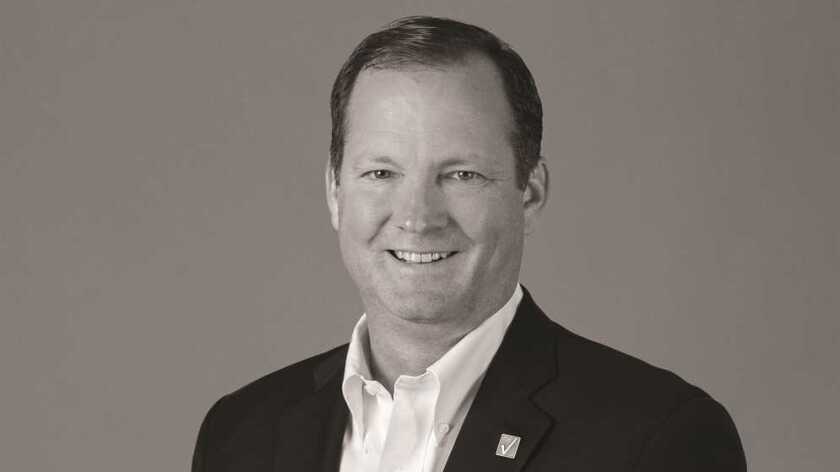Verizon has found a use for 5G wireless technology, says Kyle Malady. And it’s nothing to do with mobility, at least at the moment.
He smiles: “5G is fibre with tails hanging off.” The company is using millimetre-wave frequencies to extend fibre broadband networks to users without having to lay fibre right through the door.
Verizon is using a pre-standard version of 5G for its fixed-wireless services. “We have our own 5G spec, V5GTF,” says Malady. “That’s the Verizon 5G Technology Forum.”
That was formed just over three years ago to use 28GHz and 39GHz spectrum for trials and deployments of fixed wireless access (FWA). Verizon’s infrastructure partners are Cisco, Ericsson, Intel, LG, Nokia, Qualcomm and Samsung.
“5G is where we’re spending a lot of our time,” says Malady. “It’s so we can start working with millimetre wave specifications – learning how millimetre waves work, building tools around it and learning a lot.”
The points about starting with FWA are that, first, because Verizon controls both ends of a fixed 5G link, there’s no need to adopt worldwide standards for terminals. Second, if it’s fixed, no one is moving from one cell site to another. “Because there’s no handover that’s the easier use case,” he adds.
“We have a lot of bandwidth there, so we can learn and understand millimetre waves. We offer a fixed broadband capability – but underlying our work on 5G efficiency is dependable fibre. We have 25,000 miles of fibre in the US in addition to what we have outside. That’s a lot of density.”
Malady has “been there for all the Gs”, he adds. When he started it was called Nynex but became Verizon when it merged with Bell Atlantic in 1997.
“I formally trained as a mechanical engineer, but then took a summer job at Nynex Mobile.” That was in the analogue era. We’d call it 1G today, though no one had any concept of a succession of mobile generations. “I thought this was pretty cool. I built a cellular network in upstate New York – for an engineering person I couldn’t be luckier.”
He started out as a cell site technician, but now has an MBA in finance and he’s executive vice president and chief technology officer at Verizon.
“It’s always been a dream how we can do home broadband with wireless,” says Malady. “Ten years ago if you’d asked if we could do millimetre wave, I’d have said No.”
But now, Verizon is “putting in fibre and putting small cells in. It will be very dense.” You can feel his enthusiasm. “I’ve never seen so much technology innovation at once – so many cool things. The use cases are just fantastic.”
Verizon is “starting with a lot of industry”, he says. “The future factory will run off 5G. You can set the factory up in days and there is lots of flexibility.” These factories of the future will bring “edge computing and 5G together”, and the combination is “going to give developers a whole new platform”, he says.
FWA 5G networks will be dense, he says. “Just so much density, with hundreds and hundreds of megahertz.”
There’ll be public-safety uses, too. “Think of a future where all communications in a city are 5G, and police officers who can all come together in real time with computer vision.”
If a child is missing, TV cameras will be able to track where they’ve been. “You’ll be able to see a missing kid walk down the street. All of these use cases become possible. We’re showing what the art of the possible is,” he adds. “We have a bunch of 5G labs with people who are seeing what can be innovated. It’s cool stuff.”
Where are the skills coming from? “I’ve been lucky because we bought Yahoo and AOL,” says Malady. That’s not something you often hear Verizon people say. “From a talent perspective these guys do webscale,” he explains. “There are incredible data scientists over there. We’ve brought these folks in. That’s why the world of the future is a world with different skills.”
Meanwhile what Verizon is doing is “modernising and bringing all our networks together – mobile, fibre and wholesale”, he says. “We’re in the middle of a multi-year journey, virtualising a lot of things.”
The company runs three mobile standards – 3G, 4G and now 5G, but “2G is gone”, he says. “We’ve still got 3G, and we’re going to keep it around for a few years and then re-use the spectrum. Spectrum is so valuable you need to keep iterating,” he notes – re-farming spectrum from 1G to 2G to 3G and then to 4G and 5G. “We’ve been doing this a long time.”
But 4G will live alongside 5G for many uses, just as today 3G lives alongside 4G – if you have a 4G phone but don’t use voice over LTE (VoLTE) then every time you make a voice call your phone reverts to 3G.
And when will there be mobile 5G? “This year,” says Malady. But it looks as though FWA – tails on fibre networks – will be a killer app for some time to come.










